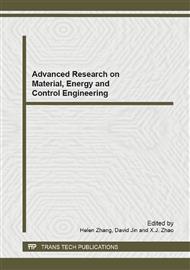p.227
p.232
p.237
p.241
p.247
p.251
p.255
p.259
p.265
Study on Energy Saving with Chinese Regional Energy-Economic Efficiency Analysis Based on SBM Model
Abstract:
Energy saving has been attached great importance in China. This paper measures the energy-economic efficiency levels of 28 provinces in mainland China from 1985 to 2010 with the SBM model considering undesirable outputs, and then analyzes the regional differences. The empirical results indicate that energy-economic efficiency level of eastern area is in absolute predominance while both the middle and west's levels are lower than the average level of the whole nation. Finally, some practical suggestions are provided to improve the regional energy saving levels.
Info:
Periodical:
Pages:
247-250
Citation:
Online since:
January 2013
Authors:
Price:
Сopyright:
© 2013 Trans Tech Publications Ltd. All Rights Reserved
Share:
Citation:


